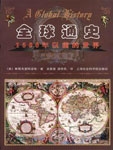Chapter 1 sequence
The first volume of this book discusses the history of human beings 2 million years before civilization, and the remaining volumes discuss the history of human civilization less than 6000 years ago.Therefore, this book obviously discusses the longest period of human evolution in the shortest space. The reason why the author focuses on the history of human civilization is that the development speed of human history has been accelerating.The geological age is calculated in billions of years, and the human prehistoric era is calculated in thousands of years. Since the arrival of civilization, the chronological unit has been shrinking, and it has been calculated in hundreds or even decades.Today, there is an endless swarm of major events that surround us relentlessly every day.The speed of change has indeed raised a very practical question: Can humans adapt quickly enough to avoid being eliminated or even extinct?
Due to the unbalanced development of all major events, the research of this book also focuses on it.However, this does not mean that we should therefore underestimate the significance of what happened in prehistoric times.During the thousands of years of prehistoric times, two major developments laid the solid foundations for all subsequent history.One is the gradual transformation of primates into humans, that is, the transformation of human ancestors into real humans; the other is the transformation of primitive people from food gatherers relying on the blessings of nature to food producers who are increasingly free from the shackles of nature and control their own destiny .These two epochal events, the formation of man and the birth of agriculture, are the subject of the first two chapters of Part I.
Although early humans took a decisive first step, which provided prerequisites for future development, it was only the first step after all.In the process of transforming into a thinking animal, humans learned to use language, tools, and fire; in the process of transforming into food producers, humans learned to plant, and learned to use hoes and sickles.The acquisition of these technologies separated man from the surrounding animals, but, compared with later technologies, these technologies were still the most primitive.If you put a stone ax or scythe next to a modern computer or spaceship, it will make a world of difference.Although this difference is self-evident, it is necessary to emphasize it here.Because it illustrates the gradual expansion of the sphere of human activity, which is also specifically mentioned in the introductions to the various parts of this book.
The more primitive the technology, the more limited its scope of use; conversely, the more advanced the technology, the wider its scope of use.In prehistoric times, the activities of food gatherers could only be limited to within a few miles of hunting activities; the activities of primitive cultivators could only be limited to their own villages and surrounding fields and pastures.Therefore, the range of activities of various human groups in prehistoric times can be said to be "local".The later history of human beings described in the later chapters of this book and the book "The World Since 1500" is, to a large extent, how the scope of human activities has expanded from local to regional, to inter-regional, and then to A history that expands to the whole world and to the stars.













































